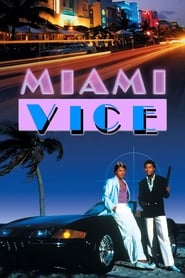Unusually for an American TV series, the show was shot on location in Miami, despite threats to move the production from the city later in the show's run due to the high costs it entailed. The realism this location shooting brought about, with an emphasis on the art deco design prevalent in the buildings of the city, helped the show stand out from contemporary police series. High production values also helped embellish this unique visual style, with cinematography that rivaled that of many movies, atypical of other 1980s television series. Each episode cost around $1.3 million to make, some 30% more than most other police series at the time. The series was one of the first to be broadcast in stereophonic sound, new to TV in the 1980s, which brought out the music and sound effects in a way rarely seen at the time. As executive producer, a title he would hold throughout the show's run, Michael Mann gave the production team one simple rule to adhere to - "No Earth Tones!" The distinctive visual appearance of the series, particularly in its early seasons, was one of pastel colors, both for the actors and the scenes in which they operated. The use of designer clothes and sports cars for both the undercover detectives and the criminals they pursued gave the appearance of high wealth for everyone. During production, much of the South Beach area in which the show was set was blighted by dilapidated buildings, homeless people and crime; in order to achieve the shots and scenes they needed, the production team would paint over graffiti and fix up decaying structures. In keeping with the subject matter implied by the show's title, the majority of episodes revolved around drug dealers and their distributors, prostitution rings, arms smugglers, counterfeiting, contraband electronics, and other similar crimes. Many episodes ended with spectacular gun battles, often resulting in the deaths of the primary antagonist(s) as well as many of their goons. The underlying theme of the series is the complete futility of the battle against drug cartels; often, the actual kingpin of the organization would escape prosecution altogether, and even when the detectives did succeed in securing a lasting conviction, several new groups would be waiting to step into the void left by the departed criminals. Another constant issue the Vice cops had to deal with was the corruption present within the Metro-Dade police department and other governmental agencies (FBI/CIA/ATF/DEA) combating drugs in Florida, as drug dealers bribed low-level clerks and even high-ranking officials to help safeguard their positions of criminal power. Early episodes had many of the elements of a standard police procedural, such as the explicit planning of busts, but as the series progressed these aspects were largely abandoned to allow for greater focus on the show's use of cool dialogue, crisp images and unexpected endings.
Scritto da il
05-03-2025 alle ore 07:05
Immagini
Nessun dato in archivio
Consiglia
Voto
Nessun dato in archivio
Commenti
Nessun dato in archivio
SerieTv
Nessun dato in archivio
